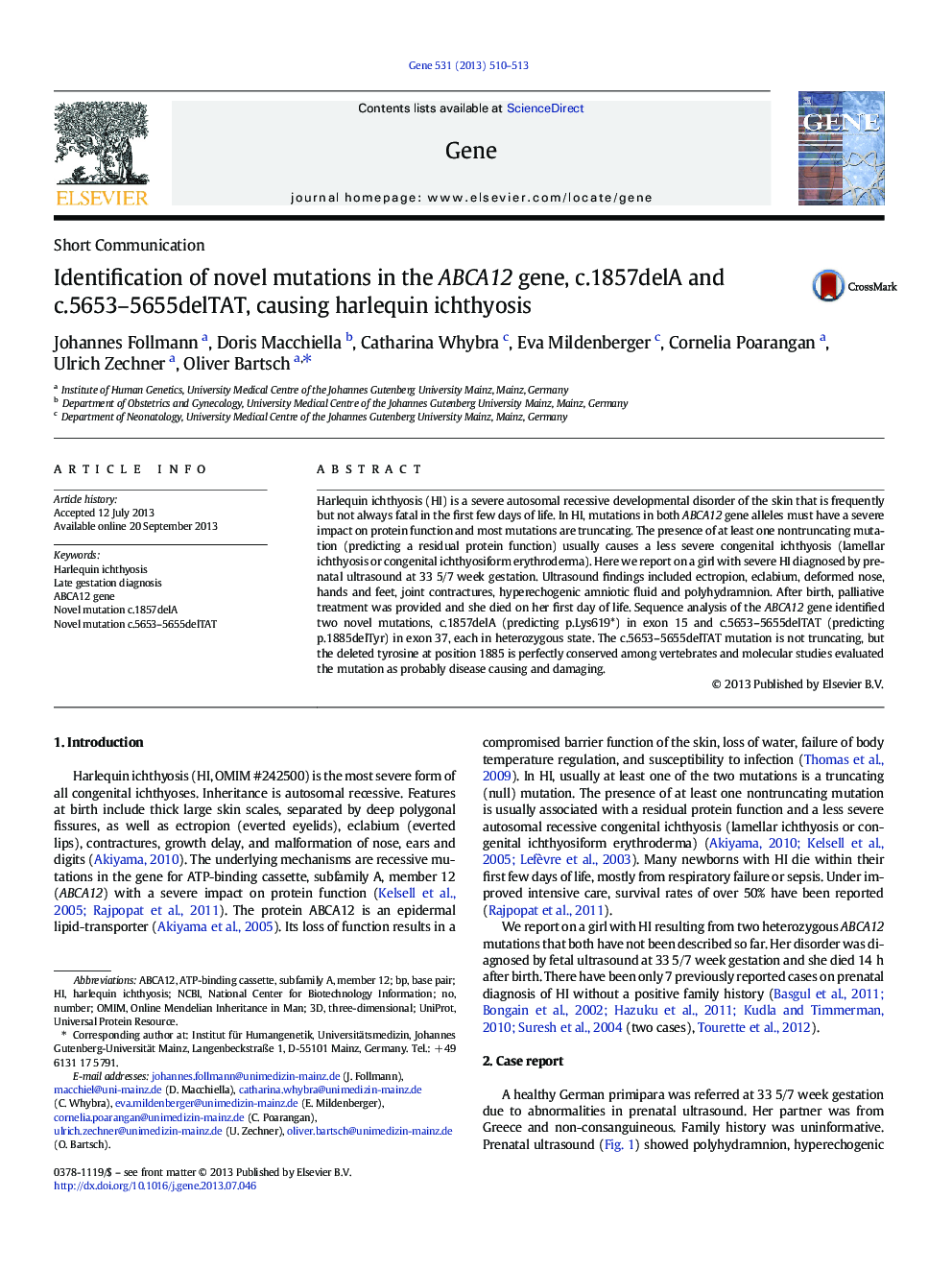| Article ID | Journal | Published Year | Pages | File Type |
|---|---|---|---|---|
| 2816884 | Gene | 2013 | 4 Pages |
•A case of harlequin ichthyosis (HI) diagnosed in late gestation is presented.•Two novel ABCA12 mutations causing HI were identified and characterized.•Typical late gestation ultrasound findings of HI are demonstrated.•The newborn child with HI is depicted.
Harlequin ichthyosis (HI) is a severe autosomal recessive developmental disorder of the skin that is frequently but not always fatal in the first few days of life. In HI, mutations in both ABCA12 gene alleles must have a severe impact on protein function and most mutations are truncating. The presence of at least one nontruncating mutation (predicting a residual protein function) usually causes a less severe congenital ichthyosis (lamellar ichthyosis or congenital ichthyosiform erythroderma). Here we report on a girl with severe HI diagnosed by prenatal ultrasound at 33 5/7 week gestation. Ultrasound findings included ectropion, eclabium, deformed nose, hands and feet, joint contractures, hyperechogenic amniotic fluid and polyhydramnion. After birth, palliative treatment was provided and she died on her first day of life. Sequence analysis of the ABCA12 gene identified two novel mutations, c.1857delA (predicting p.Lys619*) in exon 15 and c.5653–5655delTAT (predicting p.1885delTyr) in exon 37, each in heterozygous state. The c.5653–5655delTAT mutation is not truncating, but the deleted tyrosine at position 1885 is perfectly conserved among vertebrates and molecular studies evaluated the mutation as probably disease causing and damaging.
